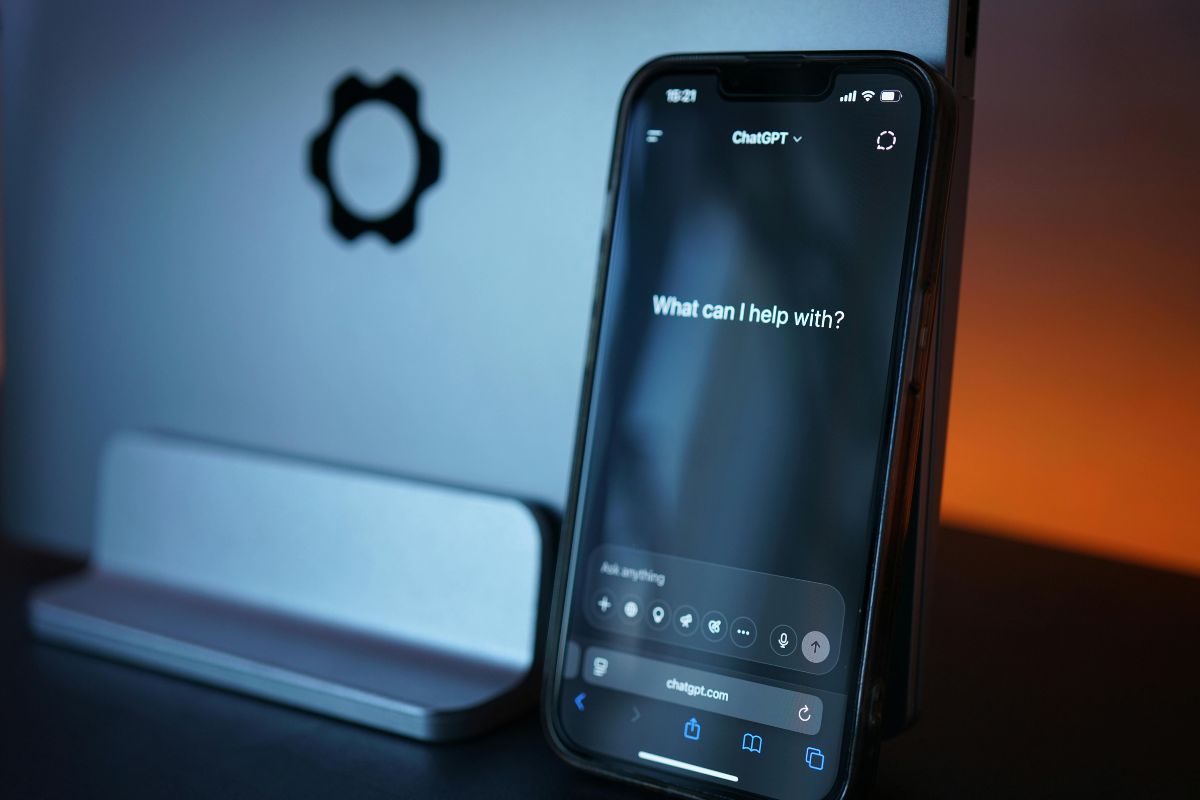Generative Engine Optimization Walkthrough for Small Businesses
Key Takeaways
- Generative AI is reshaping search behavior, users now click fewer links and rely more on AI summaries.
- Generative Engine Optimization (GEO) helps your content appear inside AI-generated answers, not just search results.
- GEO complements, not replaces, SEO, combining both maximizes visibility across search and AI platforms.
- Early GEO adoption gives small and medium-sized businesses a first-mover advantage and boosts authority.
- Success with GEO requires clear, conversational, structured, and regularly updated content.
- Track GEO performance through AI citations, brand mentions, referral traffic, and AI-attributed conversions.
- Businesses that adapt early to GEO will own visibility in the next era of search.
Introduction
Until recently, SEO was a central topic for every company, but people’s search behavior is changing drastically. As generative AI rises in popularity, traditional search queries are declining. Now, users are almost twice as likely not to click on links when AI summaries are available. If you don’t adapt to this changing digital landscape, your inbound traffic will suffer.
In order to catch up with your audience, it’s time for you to learn what generative engine optimization (GEO) is and leverage it for growing your business.
What This Post Covers
- The Importance of GEO: The way we search for information and products is drastically changing, and a growing number of people already rely heavily on AI tools instead of traditional search engines.
- Definition of GEO: Generative engine optimization (GEO) is a new strategy for optimizing content for AI-driven search engines. It is gradually becoming a crucial part of digital marketing strategies.
- GEO vs. SEO: GEO will not replace traditional SEO entirely, but businesses that implement both will see significant results.
- Implementing GEO: Although GEO is part of SEO, it has its own set of best practices, tools, and metrics that can help small and medium-sized businesses grow their audience and leads.
Let’s dive right into it.

What Is Generative Engine Optimization?
Generative engine optimization (GEO) is the process of optimizing content for AI-driven search engines, such as Google’s AI Overviews and Microsoft Copilot. This involves structuring and formatting your content so that AI-powered search engines and platforms can understand, trust, and cite it.
The ultimate goal is to become a source for AI-generated answers. Unlike SEO, which improves your website’s ranking on search results pages and drives traffic to your website, GEO increases your visibility and credibility within AI-generated responses.
GEO ensures that your brand and information are included in AI’s synthesized, conversational answers when users inquire about anything related to your business, whether it is general informational, specific questions about products, services, comparisons, or recommendations.
First and foremost, GEO involves optimizing for AI algorithms and user intent so that AI models see your content as credible, while also appealing to your human audience.
For instance, when someone searches for the best running shoes, they receive a summary containing information and product recommendations from optimized running shoe websites instead of just links. If they want more, they can visit the specific websites.

Why Does GEO Matter Today?
Although generative engine optimization is still a fairly new concept among marketers, the numbers show that already 72% of searchers use Google’s AI Overview when it appears and 62% of people use an AI chatbot every day.
As the initial excitement around AI has slowly settled, its importance continues to grow, and we already see people trusting and using it increasingly more. Even if you have mastered SEO and are among the top search results, that easily might not be enough, as a large portion of people ignore website links when an AI summary is present.
So why does GEO matter today? Because without it, your business won’t.
The fact that generative engine optimization is still new and not a common practice for every business offers a big advantage. Early adoption of GEO can position your business as a leader, set you apart from competitors, and establish you as an authority in your field. This is especially helpful for small and medium-sized businesses.
A study from this year shows that only ChatGPT usage nearly tripled from February 2025 to August 2025, rising from 4.1% to 12.5% for general searches. Focusing on GEO also increases your reach and allows you to capture a broader audience. Go where your target audience is and your numbers will thank you for it.
Further recent research shows that GEO can increase visibility up to 40% in generative engine responses. Appearing continuously in AI summaries and answers increases your business’s authority and credibility, placing it among the top trusted sources.

What Is the Role of GEO in Future Search Engine Optimization?
Looking at recent trends and numbers, you might be wondering whether GEO has come to replace traditional SEO. The answer is no, but generative engine optimization is gaining popularity and becoming crucial if you want visibility. Sooner or later, all businesses will need to implement it.
While generative engine optimization has its own set of practices and strategies, it is still a part of SEO, and you shouldn’t neglect one in favor of the other. GEO is only an extension, not a replacement.
Traditional SEO techniques often lay the essential groundwork for GEO. When combined, they can create a digital marketing strategy that maximizes your online presence. While SEO gets you ranked, GEO makes sure your expertise is visible in AI responses.
The good news is that they share many core principles and practices, creating significant overlap. Structured content with headings, schema, and bullet points helps Google rank your website and helps AI with summaries. Both SEO and GEO also favor long-form, comprehensive content.
However, there are a few important differences. While SEO means optimizing for click-through and favors keywords and links, GEO focuses on inclusions in AI-generated answers and summaries and prefers conversational phrasing, topical authority, and structured clarity.
Understanding how they overlap and differ, as well as how they work together, is crucial for developing a strategy that incorporates both and positions your business in traditional search engine results and AI-generated answers and summaries.
Although GEO and AI represent the future as search behavior shifts towards them, SEO remains the fundamental groundwork you shouldn’t ignore.
Distinguishing SEO, AEO, GEO, and LLMO
When you hear about SEO, AEO, GEO, and LLMO, it can feel like a bunch of random letters thrown together. However, each of these acronyms reflects how search behavior has evolved and how businesses need to adapt. Rather than competing strategies, think of them as tools that complement and build on each other.
Search engine optimization (SEO) is the foundation. It makes sure your website is visible on Google’s search results and attracts organic traffic. For example, if someone searches for the best project management software, SEO determines whether your website appears on the first page of results or a competitor’s.
Answer engine optimization (AEO) focuses on optimizing for voice assistants and direct-answer engines like Siri, Alexa, or Google Assistant. Rather than showing a list of links, these tools provide one concise answer. If a user asks Alexa for the best pizza place nearby, AEO determines whether Alexa mentions your business or a competitor’s.
Generative engine optimization (GEO) is about optimizing content for generative AI tools like Google’s AI Overviews, ChatGPT, and Microsoft Copilot. These tools don’t just pull snippets, but rather synthesize full, conversational answers.
Large language model optimization (LLMO) is the most technical layer and its goal is optimizing the content so that large language models (LLMs) understand and prioritize it. This involves providing the models with the appropriate context, structure, and authoritative signals to ensure that your information is considered accurate and reliable.
The key to content optimization is not choosing one or the other, but rather, finding the optimal combination of all four to avoid missing out on potential traffic and leads.

How to Implement GEO: Strategies and Mechanisms
Understanding how generative AI (GenAI) works allows you to tailor your strategy to meet its requirements, ensuring your content is synthesized effectively and ranks highly in AI-generated responses.
Generative engines scan and synthesize huge amounts of content, which is then evaluated for quality and relevance and prioritized based on these factors. Your goal is to ensure your content is structured and credible enough to be selected.
Now, what practical steps can you take to implement GEO and get your content picked up by AI?
1. Start with Research and Analysis
First, identify what people are asking genAI tools and what content AI already prefers. You can do this by researching topics relevant to your business and making inquiries that a potential customer would.
This includes questions about your business, products, services, ideas, and how-tos that you have shared on your website. For example, a company that sells software might research what answers appear when they ask ChatGPT about software recommendations.
This research will not only help you better understand how AI summaries and AI tools work but will also show you the recurring sources in your field. You can then explore how they have optimized their content.
2. Create High-Quality, Relevant Content
When it comes to GEO, your content should clearly and authoritatively answer user questions with updated statistics. The AI research and analysis you have conducted can help you choose the right topics.
There’s no point in producing content about something nobody cares about. Anticipating your target audience’s needs and potential questions is how you get on their radar, so always keep in mind what is important to them.
Staying up to date is also crucial for being picked by AI. Update your content regularly, using current data, links, and statistics. Real-world case studies, comparisons, and recent statistics set your content apart from generic content and clarify your claims.
3. Optimize Structure and Clarity
When it comes to GEO, structure is very important because it helps AI quickly pick out relevant sections and generate its answer based on your content. It also makes it more readable for humans.
Clear headings, FAQs, lists, and short paragraphs all help AI in summarizing effectively and concise, structured answers can be lifted directly into AI responses. Nowadays, both people and AI love skimmable content that allows them to easily find what they need.
4. Leverage Conversational Tone
People often type out specific questions when looking for information, especially on tools like ChatGPT, where you can easily have a full conversation with AI. At the same time, AI favors a conversational tone.
For this reason, when optimizing for GenAI, write your content in natural, human-like phrasing. Focus on phrases that people actually speak or type in natural language. Include synonyms, variations, and related terms to capture broader semantic intent.
For example, a great way to phrase a heading in your blog posts is by mimicking the way people might ask questions on Google or in AI tools. Include all the whats, hows, and whys to anticipate any follow-up questions a person might have.
5. Build Brand Authority and Credibility
AI favors trusted, authoritative sources. To become one of them, publish original insights, data, and expert commentary. Collaborate with industry experts and use backlinks from trustworthy websites to strengthen your credibility.
For example, a marketing agency could publish a “State of GEO in 2025” report and AI engines are more likely to cite it because it’s unique and trustworthy data. Identify gaps in your field and fill them with your expertise.
6. Maintain Technical SEO Foundations
As we established, GEO cannot replace SEO, but it can build on it. Once you start investing in generative engine optimization, don’t forget about traditional SEO foundations.
Schema markup, site speed, and structured metadata help AI scan and interpret your content. If you plan to implement GEO by using your existing content, make sure it’s technically sound and updated.
7. Experiment, Test, Adjust
GEO is still new and there is much more to learn about GenAI. What’s more, with marketing strategies, there is no right answer that will work for every business. Test prompts, track citations, and continuously adapt strategies.
For example, a software company might run monthly tests in ChatGPT and Google AI Overview for queries like “best project management tools” and adjust their content until the desired results are achieved.
8. Treat GEO as Ongoing
GEO is not a one-time effort. You need to put in continuous effort to achieve success. Stay consistent and regularly update your content to stay relevant.
For example, you might have a great blog post from 2022, but if it doesn’t contain up-to-date links, data, and stats, nobody will see it.

Tools & Metrics To Track GEO Visibility
No matter how well you follow the practical steps for implementing GEO, the key to success is tracking your progress and making adjustments as needed. But how to track your GEO efforts?
GEO offers nuanced metrics and insights that can help you refine your strategies, improve engagement, and gain a deeper understanding of how users interact with your content.
Visibility and Presence Metrics
These metrics show whether your content is being picked up by generative engines. Track citation frequency to see the number of times your domain is mentioned in AI-generated answers and brand mentions in AI responses, which is how often your business name appears in generative summaries. Share of voice in AI shows you the percentage of AI-generated answers in your niche where you’re featured compared to competitors. Last, but not least, prompt coverage shows you how many user queries (keywords/questions) you’re included in versus missed opportunities.
Authority and Quality Metrics
Authority and quality metrics show how AI engines perceive and prioritize your content. For example, response prominence shows whether you’re cited as the primary source or buried as a secondary mention. Source diversity is the number of different AI engines and platforms citing your content. Track unique source value to see whether you’re cited for original insights and data versus generic content.
Engagement and Traffic Metrics
These metrics allow insight into how AI visibility translates into actual user actions. Track AI-attributed traffic to see how many visits are coming directly from AI summaries and citations. Click-Through Rate from AI results can show you the percentage of users clicking your link when it appears in generative responses. Session quality, on the other hand, shows you bounce rate, time on page, and engagement for visitors referred via AI engines.
Conversion and Revenue Metrics
Conversion and revenue metrics might be the most important ones as they connect GEO visibility to business outcomes. Track leads/conversions from AI Sources, revenue from AI-Sourced Traffic, and conversion rate by AI platform compared to SEO or ads.
Experimental Metrics
Lastly, use AI engines and tools to regularly test your content. You can gain valuable insight by testing whether AI picks your content for test queries you run monthly, which content types get picked up most often, and see the differences in how various AI engines cite you.
Tools to Track GEO Metrics
Although GEO metrics and tools still have a long way to go, some tools are already available to assist you in your tracking efforts.
For example, you could use Perplexity AI to test how your brand appears in generative answers and SEMRush experiments to track AI visibility. Similarweb is good for tracking referral traffic spikes that might come from AI engines and Google Analytics 4 (GA4) can track referral traffic from AI engines.
More startups and features are already appearing, and soon, marketers will have a much wider variety of choices. Leveraging this data allows you to refine your strategies to better meet user needs, improve content relevance and drive more effective engagement.

GEO FAQs
1. What is Generative Engine Optimization (GEO)?
GEO is the process of optimizing your content so that generative AI platforms like ChatGPT, Google AI Overviews, and Microsoft Copilot cite your brand in their answers. Unlike SEO, which helps you rank in traditional search results, GEO makes sure your business is included in the AI’s actual response.
2. Why Does GEO Matter if I Already Do SEO?
Because people don’t always click links anymore and many trust AI-generated answers directly. Even if you rank in the top results on Google, the AI Overview might summarize your competitors instead. GEO ensures your expertise is present in that first answer users see.
3. Is GEO Only for Big Companies?
No. In fact, smaller businesses can benefit more because AI often pulls from specific, niche, authoritative sources rather than just huge corporations. If you’re an expert in your space and present your knowledge clearly, AI will surface you.
4. Can I Use my Existing SEO Content for GEO?
Yes, but it needs to be updated and adjusted. Add conversational headers, answer questions directly, and structure your posts so that AI can directly take your text into answers. Think of it as making your content AI-friendly rather than starting from scratch.
5. How is GEO Different from SEO, AEO, or LLMO?
The main difference between GEO, SEO, AEO, and LLMO is what you are optimizing for. SEO is optimization for traditional Google rankings, while AEO is for direct answers in voice assistants like Siri or Alexa. GEO is optimizing for generative AI engines like ChatGPT and Google AI Overviews. Lastly, LLMO is optimizing to make your content more understandable and accessible to AI language models like ChatGPT or Google’s Gemini. They overlap, but GEO is about being cited directly in AI’s conversational answers.
6. What Types of Content Perform Best for GEO?
Use content that’s clear, structured, and authoritative. FAQs, how-to guides, listicles, tutorials, and original research all work well. For example, a blog post on the 10 best CRMs for freelancers has a much higher chance of being summarized by AI than a vague sales page.
7. How Do I Measure GEO Success?
Instead of just clicks, track how often your domain is cited in AI responses, how much referral traffic you get from AI-driven platforms, how often your business gets mentioned in AI-generated content, as well as demo requests and sales attributed to AI-sourced traffic.
8. How Often Should I Update My Content for GEO?
Regularly. Generative AI favors fresh, trustworthy sources. Updating statistics, links, and examples every few months keeps your content more likely to be cited.
9. Do I Need Special Tools for GEO?
Not necessarily, but testing your brand in platforms like Perplexity AI, Google AI Overview, and ChatGPT can give you visibility benchmarks. SEO tools like SEMrush and Similarweb are starting to add GEO-focused features too, which can give you more useful insights.
10. Why Should Small And Medium-Sized Businesses Care About GEO Right Now?
GEO is still new and early adopters can establish authority before competitors catch on. Just like the early SEO adopters dominated Google search results for years, the first businesses to optimize for GEO will become the default “trusted sources” AI engines use.
Implementing GEO in Your Marketing Strategy
SEO is well-established and competitive, while GEO is still new and underutilized. Adopting generative engine optimization now can give you a first-mover advantage, set you apart from competitors, and establish you as an authority in your field. Building on your existing SEO foundation with GEO best practices can deliver great results for your business.
However, adding a new component to your marketing strategy, especially one so new and still changing, can be challenging. If you are struggling to get started or optimize your strategy, consider getting professional help. If you want your business to actually appear in AI answers, our team of experienced inbound marketing consultants can assist you.
Just drop us a line and we’ll find a simple solution to any complex marketing problem you’re having.

